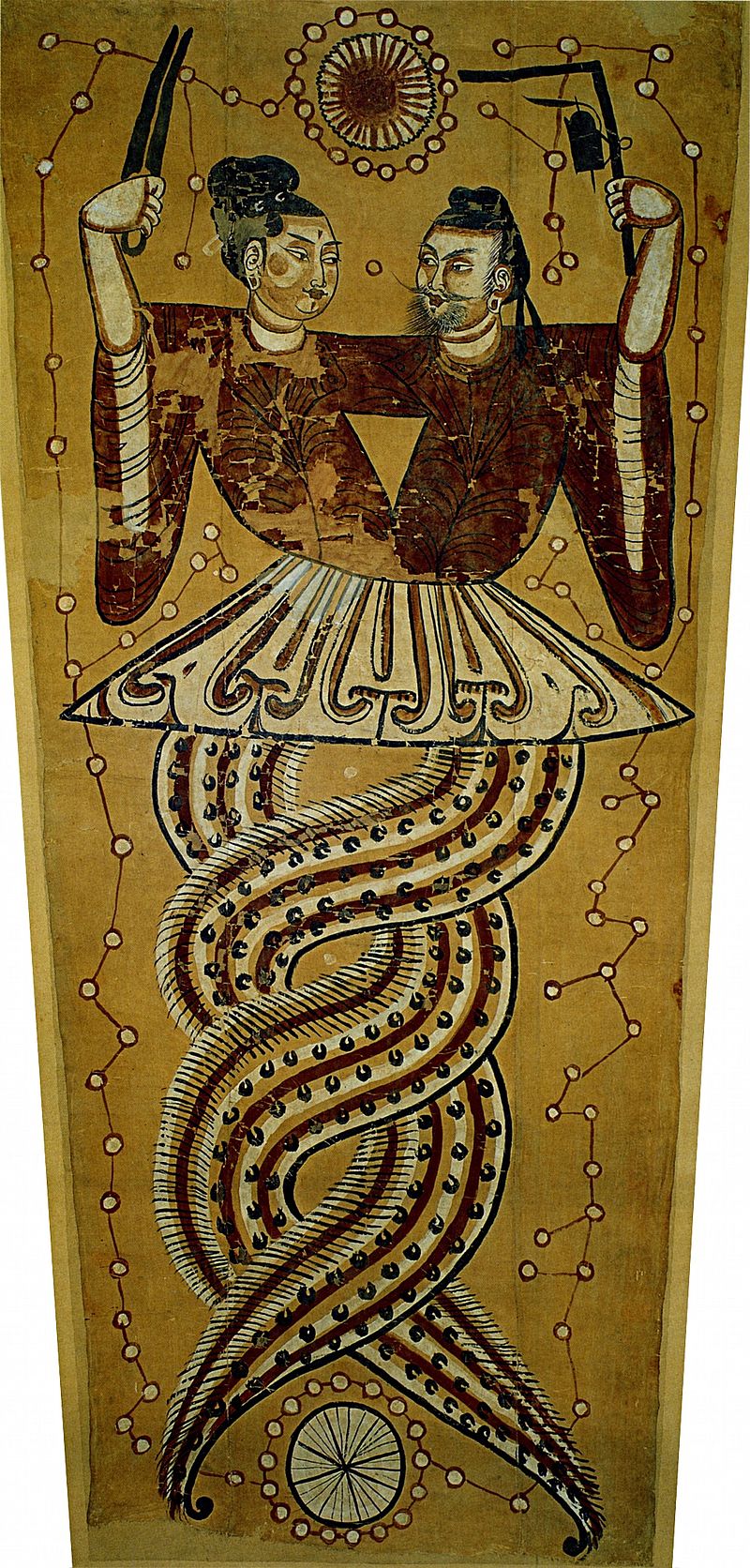Ancient Psychedelia: Alien Gods & Mushroom Goddesses
Online Book - Chapter 4, Page 55
Back to Online Book Mainpage / Next Page (Chapter 4, Page 56)
| Usually though, the creation myths center on the earth and nature. In the Australian aboriginal creation myth, the great world-creator and mother, maker of the water, the animals and vegetation, is a snake goddess named Eingana who lives in dreamtime and occasionally rises up to create more life. Another snake goddess of the Aborigines in Australia is Julunggul, who also goes by Kungpipi or Kalwadi, and her ritual name is Mumuna. She is a rainbow serpent goddess capable of assuming male, neuter, or androgynous form. She is embodied in the stones, crystals, the ocean, waterfalls, rivers and streams where she lives. She is a goddess of initiation (rebirth) and puberty. At initiation young boys were symbolically swallowed and regurgitated out as young men. This was a shamanic initiation story. The story of a serpent goddess who would consume people and regurgitate them in rebirth. There is also Puana, a snake goddess in Yaruro mythology. The Yaruro are from Venezuela and Puana is their creatrix of everything, “Mother Goddess.” The tales say she created Kuma, the first woman on Earth who gave birth to every living thing. (16) In one of the earliest creation myths in ancient China, Nu Gua is a snake goddess, half snake, half human, whose existence dates back at least to early Neolithic period. In later myths from the Han Dynasty, she is united with her brother or husband Fu Xi, and they were worshiped together as the ancestors of mankind. In Egypt, Khnum is the god who fashions man from clay, whereas in China, it was Nu Gua, the mother goddess who creates mankind from clay. In the Hebrew myth of the Flood it was Jehovah, or Yahweh who repopulated the earth but in China, Nu Gua was the one who was responsible. She also created musical instruments in order to bring about harmony. Fu Xi was said to have invented the hexagram symbols for the I-Ching and both Nu Gua and Fu Xi are represented with snakes intertwined around them, as the yin and yang symbol, while holding the instruments of creation, the square and compass. In a painting of Nü Gua and Fu Xi unearthed in Xinjiang, the skirt they share perfectly occults a mushroom cap while the tails create the stems (45i).  (45i) Painting of Nü Gua and Fu Xi unearthed in Xinjiang |
Donna Carry goes on to say in her article on the Year of the Snake, that earlier stories held Nu Gua as an independent goddess, but later versions of the myth have her paired with Yu the Great, sometimes depicted as a Dragon, who establishes the male dynasty and the divine right of kings to rule. This was the change from a matriarchal ideal of lifestyle in China to a patriarchal one. (17) In the Tonga language the term for snake (ngata) also means worm or maggot and potentially eel as well. We should consider the Tonga people are islanders and their mythos might be more centered on the sea and originally the “eel” of their mythology could have been a sea serpent. In the story chiefess Kaloafu and the chief Teuhie adopted a child who they thought was a god as they had been told but turned out to be an eel instead. The people of Samoa came out and chopped it up, ate it, and from its head a coconut palm grew. (18) In a Samoan tale told by Ia'ele in Satupa'itea, the eldest of three daughters of poor parentage, agrees to her father’s request to marry a rich serpent living in the forest. This snake could take human form and Sina married him. What I find interesting here is the similarity of the name Sina with Melusine. (19) Melusine will be covered extensively in an upcoming chapter. The advent of religion occurred when the population became large under an empire which sought to not only control its people but convince them that their missions abroad for invasion purposes were in the keeping with the wishes of the gods and therefore the mythology of the gods needed to be created, if for no other purpose, the comradery of the national people. All in all, early mythology from Sumer, Akkad and Mesopotamia did not represent nature so much anymore, as it did a justification for kingship and control over the kingdom. However, it did not start out this way, at least not in ancient India, where we venture to first. In Africa, tribal art generally represents mushrooms (40a-g) similar to the way that South American Peruvian art represents them, either above the head, or below their body. Dogon masks from the early 1900’s displays a mushroom prominently at its base (40h). Sometimes we see serpent deities depicted as well (40i, j). (16) The Great Cosmic Mother, p. 57-8 (17) Donna Carey, Lac, Oriental Medicine Journal, New Year/Year of the Snake 2013 - https://acutonics.com/news/the-myth-of-nue-gua-chinese-snake-goddess/); Nibley, 1992 (18) Mythology and Symbols of the Mother Goddess, p. 169; Gifford 1924: 181-182 (19) ibid; A Mythological Metamorphosis: Snake or Eel? Viktor Krupa - Asian and African Studies, 11, 2002, 1, 9-14; (https://www.sav.sk/journals/uploads/052012192_Krupa.pdf |
Go Back to Page 54